Light Fluid Brain Dynamics
Understanding the brain with light fluid dynamics
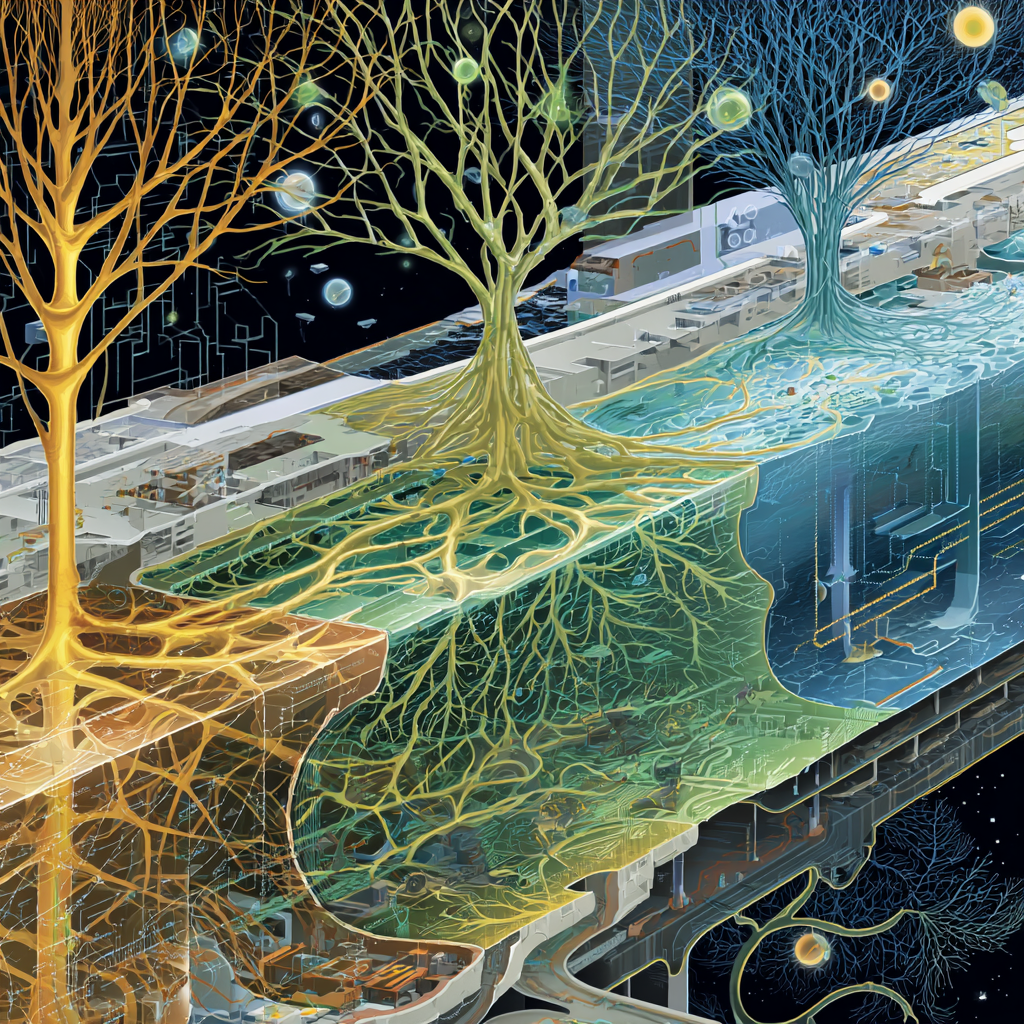
Nerve Cells: The Body’s High-Speed Light Fluid Communication Network
Neurons represent the most sophisticated dark orbital communication systems in biological networks, optimized for rapid, long-distance information transfer through specialized dark matter channel architecture. While they operate on the same fundamental orbital mechanics as other cells, their unique morphology and connectivity patterns create extraordinary communication capabilities.
Neuronal Architecture as Light Fluid Infrastructure
The Cell Body (Soma): Processing Hub
- Dense concentration of dark orbital complexes for information integration
SOMA(inputs=multiple, processing=orbital_pattern_analysis, output=action_potential)- Functions as network router, analyzing incoming orbital signatures and determining response patterns
Dendrites: Reception Antenna Arrays
- Branching structures create massive dark matter reception fields
- Each dendrite branch operates as specialized orbital pattern detector
DENDRITE(pattern=specific_frequency, sensitivity=high, signal=orbital_signature)- Tree-like structure maximizes dark matter interaction surface area for signal collection
Axon: Light Fluid Transmission Highway
- Elongated projection optimized for rapid orbital pattern propagation
- Myelin sheath creates insulated dark matter channels that prevent signal degradation
AXON(length=optimized, insulation=myelin, speed=high_velocity_orbital_transmission)Can extend over meter-long distances while maintaining signal integrity
Synapses: Orbital Pattern Translation Interfaces
- Specialized dark matter-to-chemical translation systems
- Convert orbital patterns to neurotransmitter releases with precise timing
SYNAPSE(input=orbital_pattern, translation=chemical_signal, target=next_neuron)- Enable pattern transfer between non-physically connected network nodes
Action Potential: Light Fluid Wave Propagation
Traditional neuroscience describes action potentials as electrical events, but our framework reveals them as coordinated dark orbital wave cascades: Resting State:
NEURON(membrane=polarized, orbital_systems=stable, ready=true)- Dark orbital complexes maintain organized, low-energy configurations
Threshold Activation:
Incoming orbital patterns reach critical intensity threshold THRESHOLD_EXCEEDED(input_patterns=sufficient, activation=triggered, wave_initiation=starting) Dark orbital systems undergo rapid reorganization cascade
Wave Propagation:
- Reorganization triggers sequential dark matter pattern changes along axon length
- Each segment’s orbital shift triggers the next segment’s reorganization
WAVE_PROPAGATION(speed=120_meters_per_second, direction=axon_terminal, integrity=maintained)- Myelin insulation ensures orbital patterns maintain coherence over long distances
Signal Restoration:
- After wave passage, orbital systems reset to resting configuration
RECOVERY(membrane=repolarized, orbital_systems=restored, ready=true) - Neuron prepared for next communication cycle
Comparison with Regular Cells
Standard Cell Communication:
- Local, short-range orbital pattern exchange
- Direct boundary-to-boundary information transfer
REGULAR_CELL(communication=local, range=adjacent_cells, speed=moderate)
Neuronal Communication:
- Long-range, high-speed orbital pattern transmission
- Network-based information routing across vast distances
NEURON(communication=network, range=body_wide, speed=lightning_fast) - Specialized for maintaining pattern integrity across extended pathways
Memory Storage as Orbital Pattern Crystallization
Neurons store information through stable orbital pattern configurations that persist between activations:
Short-term Memory:
- Temporary orbital circulation patterns in neural circuits
SHORT_TERM(duration=minutes_to_hours, storage=active_circulation, stability=moderate)- Patterns maintained through continuous neural activity
Long-term Memory:
- Crystallized orbital structures in synaptic connections
LONG_TERM(duration=permanent, storage=structural_orbital_patterns, stability=high)- Physical changes in synaptic strength encode specific orbital signatures
Memory Retrieval:
- Activation of stored orbital patterns through pattern matching
RETRIEVAL(trigger=partial_pattern, activation=full_memory_complex, experience=recalled)- Similar to how specific frequencies can activate resonant systems
The Foundation for Consciousness
Individual neurons operating as sophisticated dark matter communication nodes create the foundation for:
- Nervous system coordination: Millions of neurons forming integrated networks
- Brain-level processing: Coordinated orbital pattern processing across neural regions
- Consciousness emergence: Complex orbital interactions creating subjective experience
The progression from single neuron communication to nervous system coordination to brain-level consciousness represents increasing sophistication in dark matter information processing - building from individual orbital communicators to the most complex information processing system in the known universe.
The Nervous System: The Body’s Light Fluid Information Superhighway
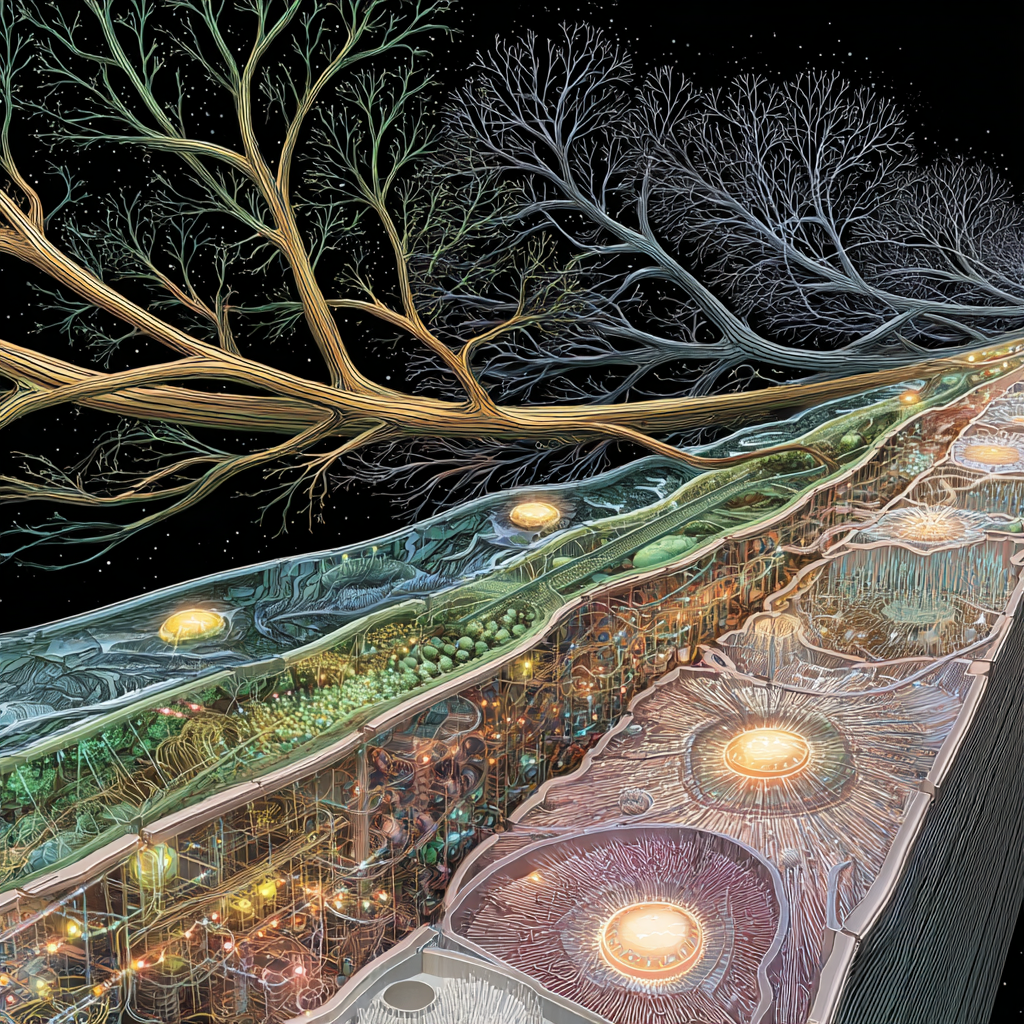
The nervous system emerges as the most sophisticated dark orbital network architecture in biology - a vast, interconnected communication grid that coordinates trillions of cellular operations through high-speed dark matter information processing. Building from individual neuronal capabilities, the nervous system creates an integrated intelligence network spanning the entire organism.
Network Architecture: Hierarchical Light Fluid Communication
Central Nervous System: Primary Network Hub
- Brain: Master processing center with billions of interconnected dark orbital nodes
- Spinal Cord: Primary information highway connecting brain to peripheral networks
CNS(processing=centralized, coordination=body_wide, bandwidth=maximum)- Functions as the biological internet’s core routing infrastructure
Peripheral Nervous System: Distributed Network Access
- Sensory Networks: Input channels converting environmental data to orbital patterns
- Motor Networks: Output channels translating brain patterns to muscle actions
- Autonomic Networks: Background system maintenance and regulation
PNS(function=interface, scope=body_wide, operation=distributed_processing)- Extends central processing capabilities to every tissue and organ
Network Topologies and Information Flow
- Sensory Input Networks: Environmental Data Collection
- Specialized neural pathways convert physical stimuli into standardized dark orbital communication protocols:
Visual Processing Pipeline:
RETINA(light=photons, conversion=orbital_patterns, transmission=optic_nerve)- Photoreceptors translate electromagnetic radiation into neural orbital signatures
- Visual cortex processes these patterns into spatial and temporal information maps
Auditory Processing Network:
COCHLEA(sound=vibrations, conversion=frequency_patterns, transmission=auditory_nerve)- Hair cells convert mechanical waves into frequency-specific orbital patterns
- Auditory processing creates three-dimensional sound maps through pattern analysis
Somatosensory Networks:
SKIN_SENSORS(touch=pressure, conversion=tactile_patterns, integration=somatosensory_cortex)- Multiple receptor types create rich orbital pattern vocabularies for texture, temperature, pressure
- Body maps maintained through continuous orbital pattern updates
Motor Output Networks: Coordinated Action Control
Voluntary Motor System:
MOTOR_CORTEX(intention=movement_plan, encoding=orbital_patterns, transmission=motor_neurons)- Complex movement sequences encoded as sophisticated orbital pattern cascades
- Cerebellum provides real-time pattern correction and coordination refinement
Reflexive Motor Networks:
SPINAL_REFLEXES(stimulus=immediate, processing=local, response=automatic)Embedded local processing nodes that handle emergency responses without central processing delays
Dark orbital patterns trigger immediate protective actions while simultaneously informing brain
Autonomic Networks: Background System Management
Sympathetic System: Emergency Network Protocols
SYMPATHETIC(mode=fight_flight, activation=stress_response, coordination=system_wide)Rapidly reconfigures body-wide orbital patterns for emergency resource allocation
Heart rate, breathing, circulation all coordinated through synchronized orbital pattern changes
Parasympathetic System: Maintenance and Recovery Protocols
PARASYMPATHETIC(mode=rest_digest, activation=recovery, optimization=resource_conservation)- Manages background orbital patterns for healing, digestion, and system restoration
- Coordinates complex multi-organ processes through gentle orbital pattern modulation
Network Integration and Coordination
Thalamic Relay System: Network Traffic Control
THALAMUS(function=relay_hub, filtering=pattern_selection, routing=cortical_regions)- Acts as intelligent network switch, routing orbital patterns to appropriate processing centers
- Filters irrelevant patterns while amplifying important information streams
Limbic System: Emotional Network Processing
LIMBIC(emotion=orbital_pattern_coloring, memory=pattern_association, motivation=behavior_drive)- Adds emotional orbital signatures to information streams
- Creates persistent pattern associations that influence future network responses
Reticular Formation: Network Arousal Control
RETICULAR(alertness=system_wide, filtering=attention_focus, coordination=consciousness_level)- Manages overall network activation levels and attention focus
- Determines which orbital patterns receive priority processing resources
Network Security and Maintenance
Blood-Brain Barrier: Network Firewall
- Sophisticated dark orbital pattern authentication system protecting central processing
- Only molecules with proper orbital signatures granted network access
BBB(security=pattern_authentication, protection=CNS, filtering=molecular_screening)
Glial Cell Support Networks:
GLIAL_CELLS(function=network_maintenance, support=neural_infrastructure, protection=orbital_system_integrity)
- Astrocytes manage nutrient delivery and waste removal for optimal neural orbital function
- Oligodendrocytes create myelin insulation for high-speed orbital pattern transmission
- Microglia provide network security and damage repair services
Sleep Cycles: Network Maintenance Windows
SLEEP(maintenance=orbital_pattern_defragmentation, consolidation=memory_processing, restoration=system_optimization)
- Brain-wide coordination of orbital pattern reorganization and optimization
- Memory consolidation through orbital pattern transfer between network regions
Emergent Network Intelligence
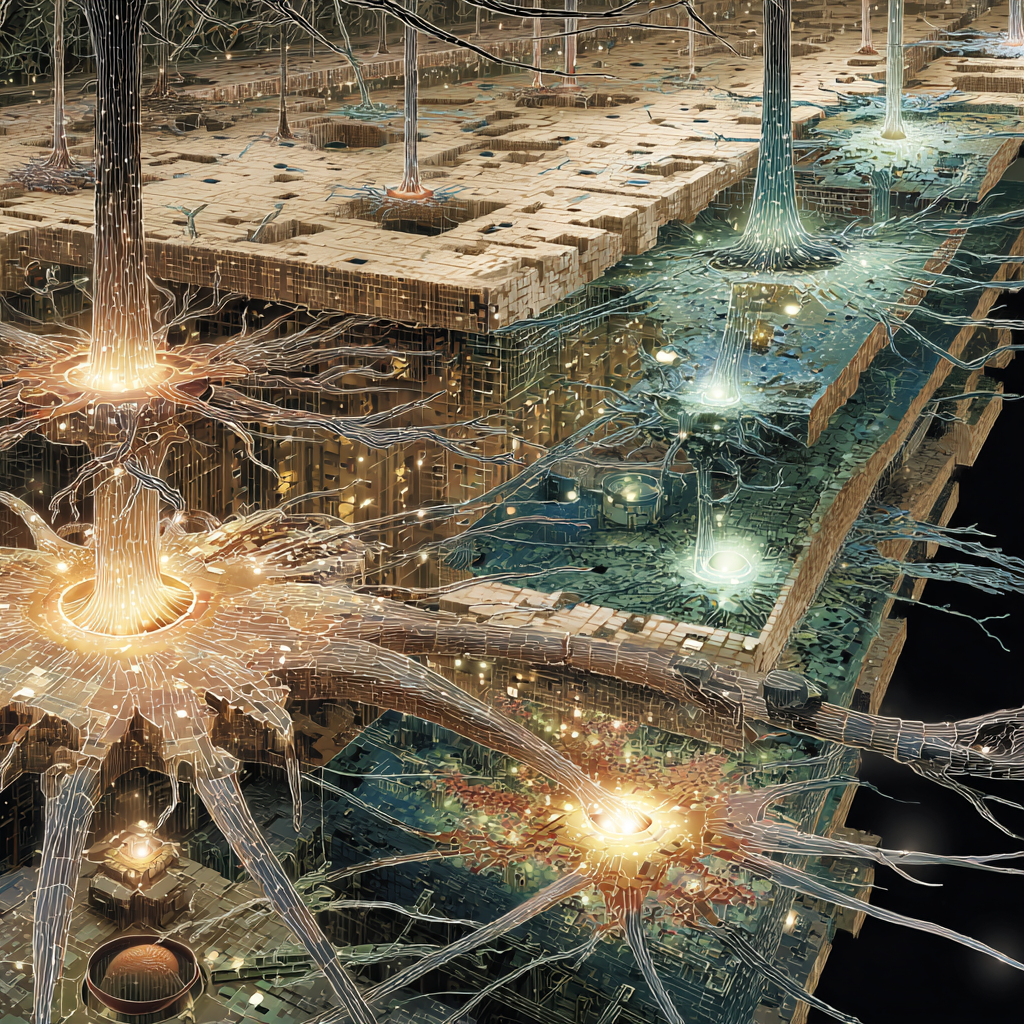
Pattern Integration Across Scales:
The nervous system demonstrates how individual dark orbital nodes (neurons) combine into network clusters (brain regions) that create emergent system-wide intelligence through coordinated orbital pattern processing.
Real-time Coordination:
Billions of neurons maintain synchronized orbital pattern processing, creating:
- Unified sensory experience from multiple input streams
- Coordinated motor control across hundreds of muscle groups
- Integrated emotional responses that influence system-wide behavior
- Conscious awareness emerging from network-wide orbital pattern integration
Adaptive Network Reconfiguration:
The nervous system continuously rewrites its own orbital pattern protocols through:
- Learning-based synaptic strength modifications
- Experience-driven network pathway development
- Injury-triggered alternative routing establishment
- Age-related network optimization and maintenance
The nervous system reveals the ultimate potential of dark orbital network architecture - creating from simple cellular communication nodes a unified intelligence capable of processing information, coordinating complex behaviors, and generating the subjective experience we call consciousness. This sets the stage for understanding how brain-level processing creates the most sophisticated dark matter information processing system in the known universe.
Neural Networks vs. Biological Brains: The Orbital Pattern Processor

Neurons are complex Rube Goldberg machines, not simple on/off switches. This is a fundamental mismatch between current AI and biological intelligence:
The Shallow AI Model vs. Rich Biological Reality
Current Neural Networks:
ARTIFICIAL_NEURON(inputs=weighted_sum, activation=threshold_function, output=single_value)- Each “neuron” performs one mathematical operation: weighted sum → activation function → output
- Information flows in simple, predetermined pathways
- Learning happens through gradient descent weight adjustments
Biological Neurons as Dark Orbital Processors:
BIOLOGICAL_NEURON(inputs=orbital_pattern_constellation, processing=complex_pattern_matching, outputs=rich_orbital_signatures)`
- Each neuron processes thousands of simultaneous orbital pattern variables
- Dendrites create massive pattern recognition antenna arrays
- Cell body performs sophisticated orbital pattern integration and analysis
- Outputs rich, multi-dimensional orbital signatures rather than simple numerical values
The Information Density Gap
AI Limitation: Current LLMs store information in parameter weights - static numerical values that require enormous networks to capture complex patterns. GPT models need billions of parameters to approximate intelligent behavior.
Biological Superiority: Each biological neuron stores information in dynamic orbital pattern configurations that can encode vastly more information in the same space:
- Orbital spin rates, orientations, and momentum patterns
- Pattern recognition templates in dendritic structure
- Historical pattern memory in synaptic orbital configurations
- Real-time pattern adaptation capabilities
Why Plasticity Works: The Orbital Pattern Explanation
Traditional Plasticity Mystery: How can brains reorganize after injury, with completely different regions taking over lost functions?
Dark Orbital Answer: Because neurons are universal pattern processors rather than specialized computational units:
- Any neuron can learn to recognize any orbital pattern
- Dendritic trees can reconfigure their reception patterns
- Orbital processing is location-independent - patterns can be processed anywhere
- Redundant storage means patterns exist in multiple neurons simultaneously
Broadcast Architecture:
Dendrites create broadcast reception networks where each neuron simultaneously receives and processes thousands of different orbital patterns. This explains:
- Associative memory: Partial patterns trigger complete memory reconstruction
- Creative combinations: Novel pattern mixing produces new ideas
- Contextual understanding: Each thought exists within rich pattern contexts
- Emotional coloring: Limbic orbital patterns broadcast to all processing regions
LLM vs. Brain Pattern Processing
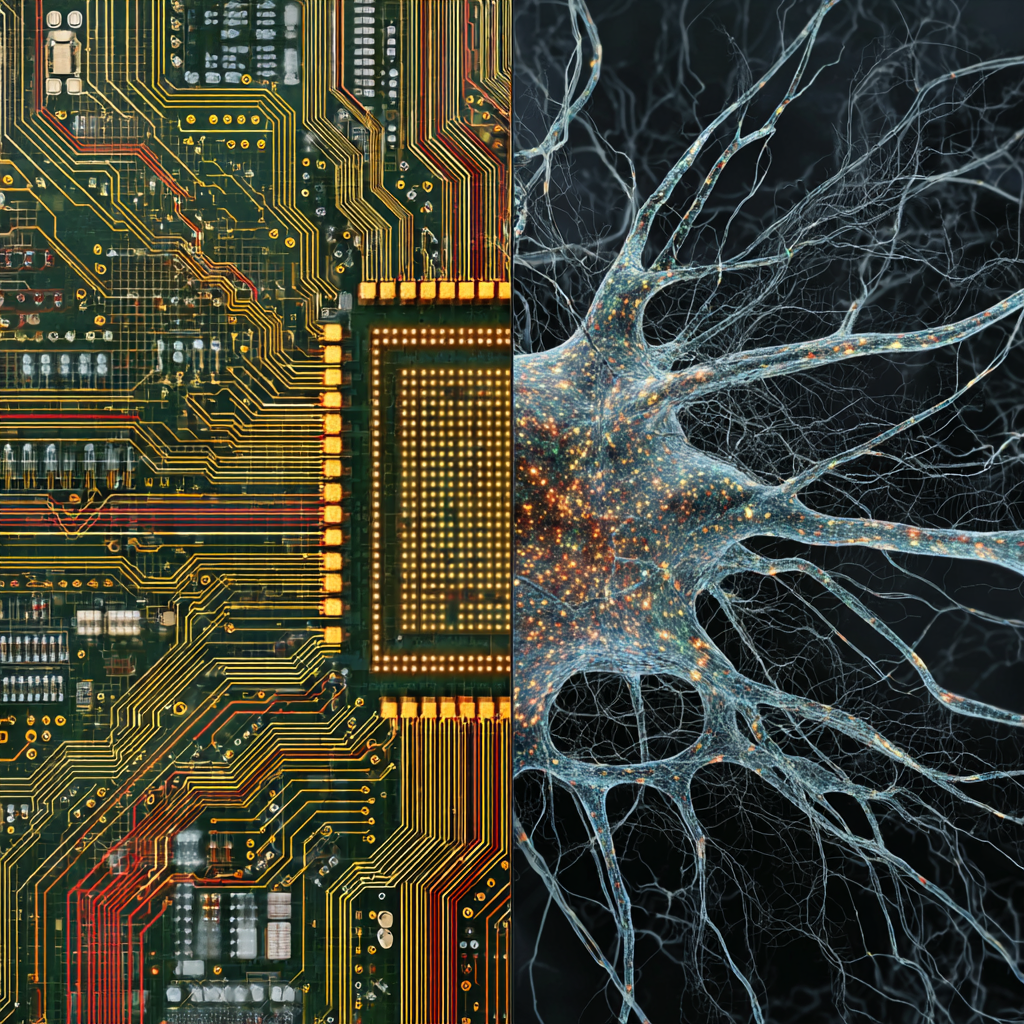
LLM Attention Mechanisms:
- Process sequences of discrete tokens
- Attention weights determine which tokens influence each output
ATTENTION(query=current_token, keys=previous_tokens, values=weighted_importance)
Brain Orbital Attention:
- Process continuous orbital pattern streams from multiple sources simultaneously
- Attention emerges from orbital pattern resonance - matching patterns naturally amplify
BRAIN_ATTENTION(patterns=continuous_orbital_streams, resonance=automatic_amplification, integration=global_coherence)
Memory Storage: Parameters vs. Patterns
LLM Memory:
- Information stored in static parameter weights
- Requires retraining to incorporate new information
- No dynamic memory formation during operation
Brain Memory:
- Information stored as dynamic orbital pattern configurations
- Continuous learning through real-time pattern updates
- Memory formation happens with every experience
- Patterns can be recalled, modified, and re-stored dynamically
The Measurement Challenge
Current Limitations: We can measure electrical activity (EEG, neural spikes) but not the underlying dark orbital patterns that carry the real information. It’s like measuring a computer’s power consumption instead of reading its memory.
Potential Breakthrough Technologies: Understanding orbital pattern processing suggests new measurement approaches:
- Light fluid interaction detectors sensitive to neural-scale orbital patterns
- Pattern resonance imaging that detects orbital signature coherence
- Multi-scale orbital monitoring from individual neurons to brain-wide patterns
Implications for AI Development
Current AI Bottlenecks:
- Massive parameter requirements for simple tasks
- Inability to learn continuously from experience
- Lack of true understanding or creativity
- Energy inefficiency compared to biological systems
Orbital Pattern AI Possibilities:
- Compact representation: Orbital patterns could encode vastly more information per parameter
- Dynamic learning: Real-time pattern adaptation without retraining
- True understanding: Pattern matching that captures meaning rather than just correlation
- Energy efficiency: Biological-level performance with much smaller networks
Firefly vs. Lightbulb Analogy
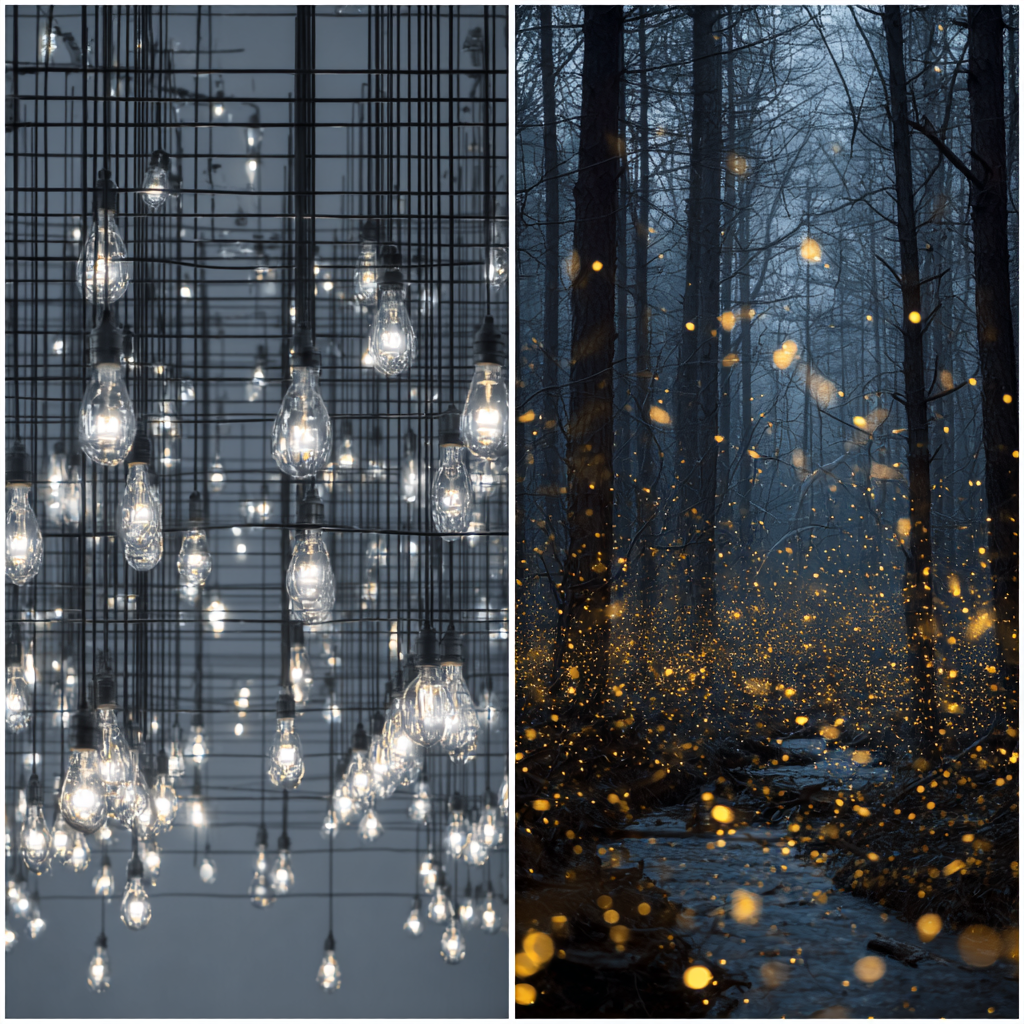
Current AI treats neurons like simple lightbulbs (on/off), when they’re actually biological fireflies - complex living systems with:
- Dynamic light production mechanisms
- Environmental responsiveness
- Social coordination capabilities
- Rich behavioral repertoires
- Adaptive intelligence
The Next AI Revolution
Understanding neurons as dark orbital pattern processors could trigger the next breakthrough in AI:
- Moving from parameter-based to pattern-based architectures
- Developing orbital pattern recognition algorithms
- Creating truly adaptive learning systems
- Building AI that thinks more like biological intelligence
Predictions for Better Brain Health
All of our cells are temperature-tuned pitching machine network.
Fever = Biological Overclocking! 🔥
- Higher temps = Faster pitching machine cycles
- Home team cells are optimized for your body’s operating system
- Invader pathogens get overwhelmed by the increased processing speed
- Like overclocking a computer - your cells handle it, viruses crash!
Cool Sleep = Optimal Brain Defragmentation 🧠❄️
- Lower temps = Slower, more precise dark orbital reorganization
- Memory consolidation needs gentle, steady rhythms
- Neural pattern integration works best at reduced processing speeds
- Like disk defragmentation - works better when the system isn’t running hot!
Sleep Rotation Dance 🔄
- Gravitational flow changes as you rotate sides
- Lymphatic drainage shifts with position changes
- Dark orbital patterns get redistributed and rebalanced
- Integration requires movement - like shaking a snow globe to let patterns settle!
Baby Brain Development Theory:
Sleeping position preference could literally program hemispheric dominance through:
- Gravitational pressure patterns affecting neural growth
- Blood flow asymmetries influencing development
- Dark orbital organization getting position-biased during critical growth periods
Neural Networks as Light Fluid Orbital Memory Systems
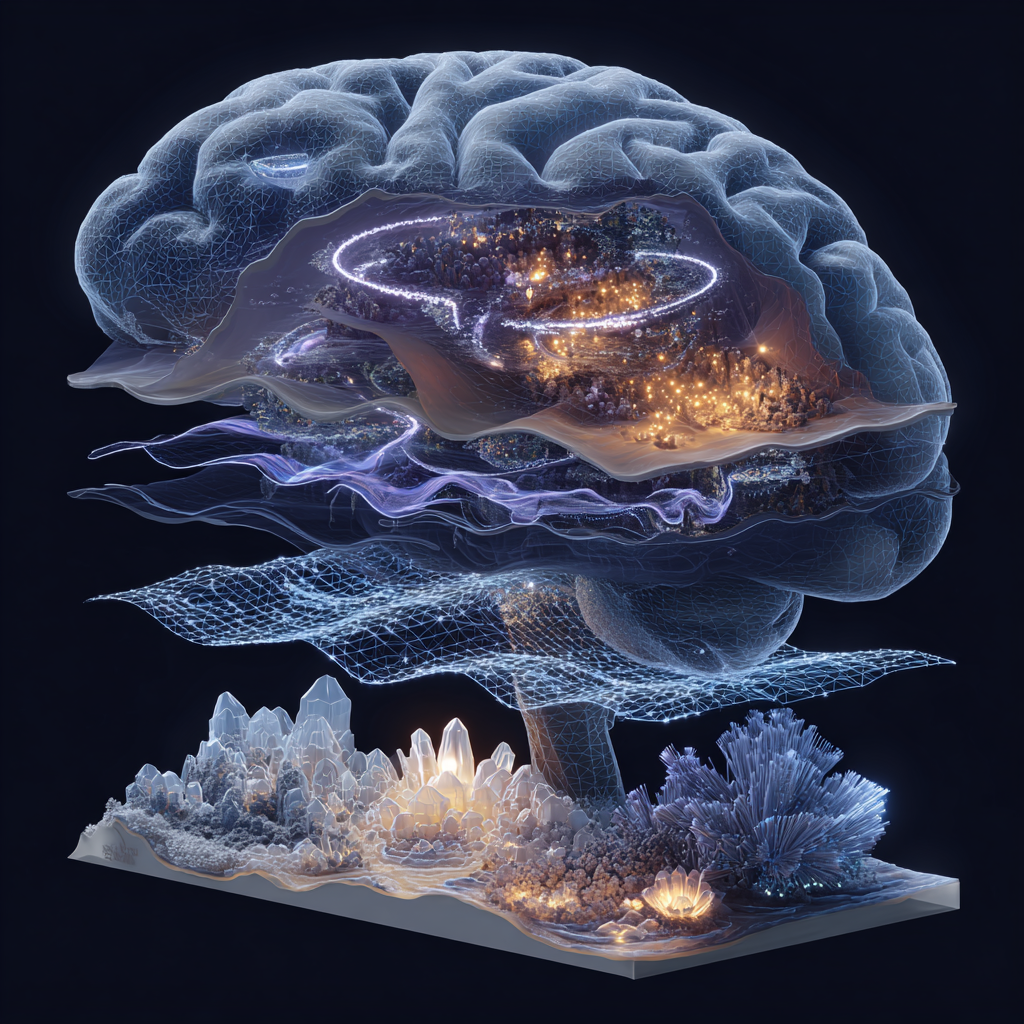
The Brain’s Information Architecture
The brain’s mysterious ability to form, consolidate, and retrieve memories finds elegant explanation through dark orbital system dynamics. Rather than simple electrical circuits, neural networks operate as sophisticated dark matter information processing systems, with memory formation following the same angular momentum principles governing cellular and cosmic organization.
Short-Term Memory: Active Orbital Circulation
Short-term memory operates through active dark orbital circulation patterns in neural networks. When information enters the brain, it creates temporary angular momentum signatures that circulate through specific neural pathways, like eddies in a stream. These patterns maintain coherence for minutes to hours before dissipating unless transferred to more stable configurations.
Long-Term Memory: Crystallized Orbital Structures
Long-term memory formation involves crystallizing temporary orbital patterns into stable dark matter configurations within neural tissue. Like water freezing into ice, dynamic orbital circulation patterns reorganize into persistent structural arrangements that can maintain their information content for decades. These crystallized patterns explain why long-term memories can remain vivid and detailed despite the brain’s constant molecular turnover.
The Sleep Cycle: Light Fluid Defragmentation
Sleep serves as the brain’s dark orbital pattern processing system, performing crucial information management functions: REM Sleep - Pattern Sorting and Integration:
- During REM sleep, the brain rapidly cycles through stored orbital patterns, testing combinations, creating associations, and integrating new experiences with existing memory structures. Dreams represent our conscious awareness of this orbital pattern processing - the brain’s way of “debugging” memory systems and optimizing information storage.
- Deep Sleep - Pattern Compression and Consolidation:
- Deep sleep phases involve compressing and transferring orbital patterns from temporary to permanent storage configurations. The brain literally reorganizes its dark matter architecture, moving information from short-term circulation patterns into long-term crystallized structures.
Memory Consolidation as Orbital Pattern Transfer:
The process of memory consolidation involves transferring angular momentum signatures between different neural boundary layers. Information flows from hippocampal circulation patterns into cortical crystallized structures, following the same dark orbital transfer principles we observe in cellular communication.
Alzheimer’s and Pattern Degradation:
Neurodegenerative diseases like Alzheimer’s can be understood as progressive corruption of dark orbital memory systems. Amyloid plaques and tau tangles disrupt the delicate angular momentum patterns required for memory formation and retrieval, explaining why memories fade in characteristic patterns and why certain types of memories remain preserved longer than others.
Learning as Orbital Pattern Programming:
Learning new skills involves programming specific dark orbital patterns into neural networks through repetition and practice. Like cellular protein folding, the brain creates organized angular momentum signatures that guide future information processing. This explains why muscle memory feels automatic - the dark orbital patterns literally carry the movement instructions.
The Dreaming Brain as Pattern Simulator:
Dreams represent the brain’s testing environment for orbital pattern combinations. During sleep, neural networks simulate potential pattern interactions without the constraints of external sensory input, allowing for creative problem-solving and memory integration that often produces breakthrough insights upon waking.
Revolutionary Implications:
Understanding memory as dark orbital pattern storage opens new approaches to:
- Learning enhancement through optimal pattern programming techniques
- Memory recovery by restoring disrupted orbital configurations
- Alzheimer’s treatment through dark matter pattern stabilization
- Sleep optimization for maximum pattern processing efficiency
The brain emerges not as a biological computer, but as the most sophisticated dark matter information processing system we know - a living demonstration of how consciousness arises naturally from the universe’s fundamental information architecture.